Discover the obscure Orthodox New Year festival of Malanka.
Riding westward on the edge of Ukraine’s Carpathian Mountains in a beat-up 80s Volkswagen van, I fell asleep. The overnight train from Kyiv, with its ancient curtains and four-to-a-room compartments, is rarely an easy sleep, but the previous night’s voyage had been punctuated by an unruly companion returning with yet another bottle of vodka and four female Ukrainian journalists in tow just as I thought we might get some sleep. Hours later, after being voted only the second-most handsome of our group, I petulantly sent our newfound friends back to their berths and tucked in for a few hours.
My bleary-eyed group of five (four journalists, one with a brother in tow) arrived in the western Ukrainian city of Chernivtsi at dawn. After a stop at a characterless fast-food restaurant and a short rest in the cavernous bunkroom of our $2-per-night hostel, we headed out.
As I slowly regained consciousness in the van, masked faces floated by the window in the thickening snow. Some of the figures held rifles and were trying to block our car by standing in the road. Checkpoints are frequent occurrences in Ukraine’s war-torn east, but that was hundreds of miles away, and these men weren’t separatists or government troops. They were taking part in a festival of the Orthodox New Year so obscure that most of my Ukrainian friends weren’t aware of it.

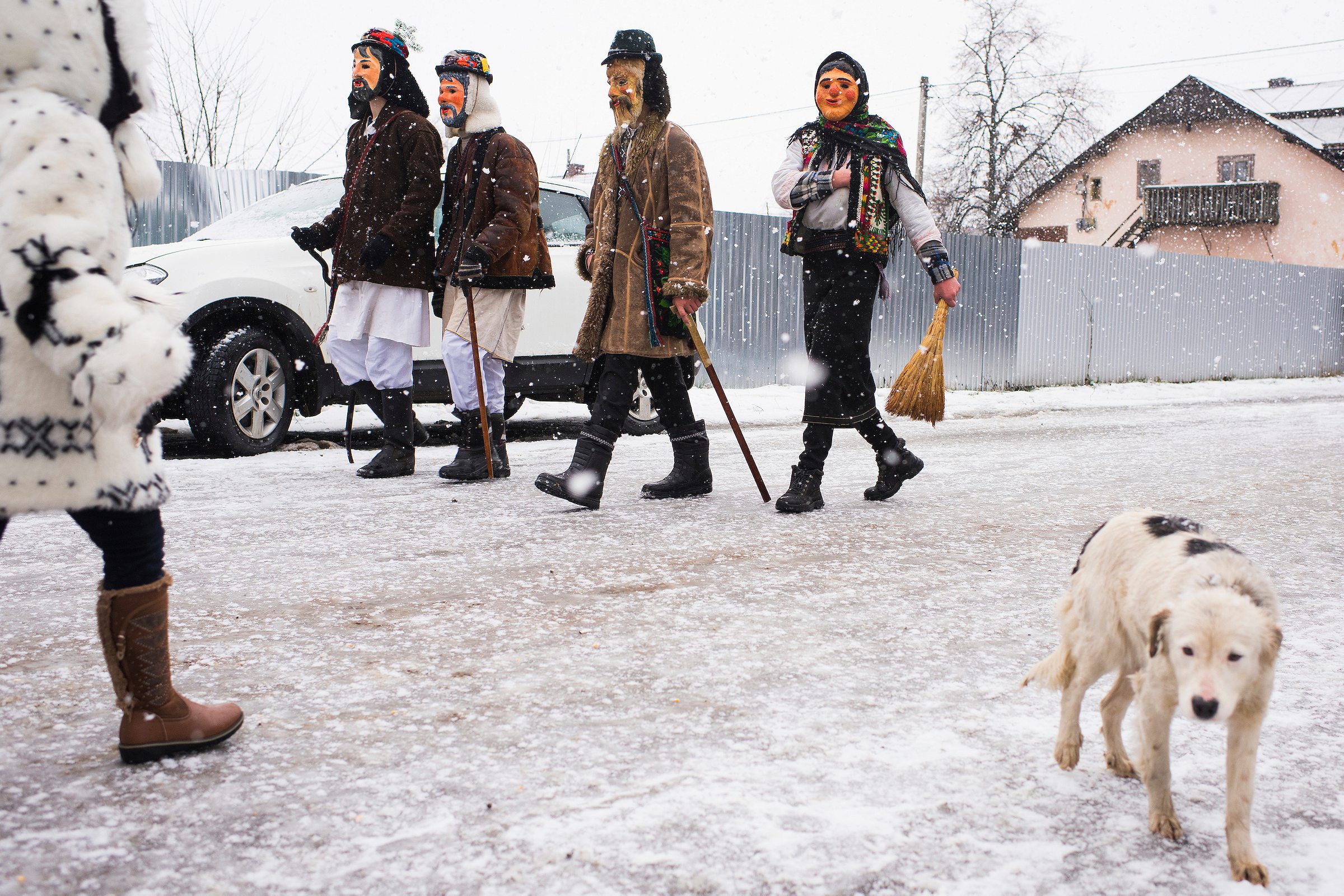
Malanka is an ancient holiday of disputed origin, now celebrated primarily in western Ukraine but also observed in parts of Russia, Belarus, and Romania. While the holiday has merged, in some respects, with the Christian Feast of St. Melania, it has pre-Christian origins and begins on the evening of Orthodox New Year’s Eve, January 13, and continues through the following day. We had come to see it for ourselves.
Things were just getting started when we arrived in the tiny town of Vashkivtsi, having paid our minimal bribes at each improvised “checkpoint” (roughly $.05 – $.40 at each stop). The city was quiet, so we wandered into the cultural house, where we were promptly adopted by babushkas who served us bread and salo (pork fat), one of Ukraine’s national dishes. Naturally, rounds of snacks were interspersed with alcohol of questionable provenance.
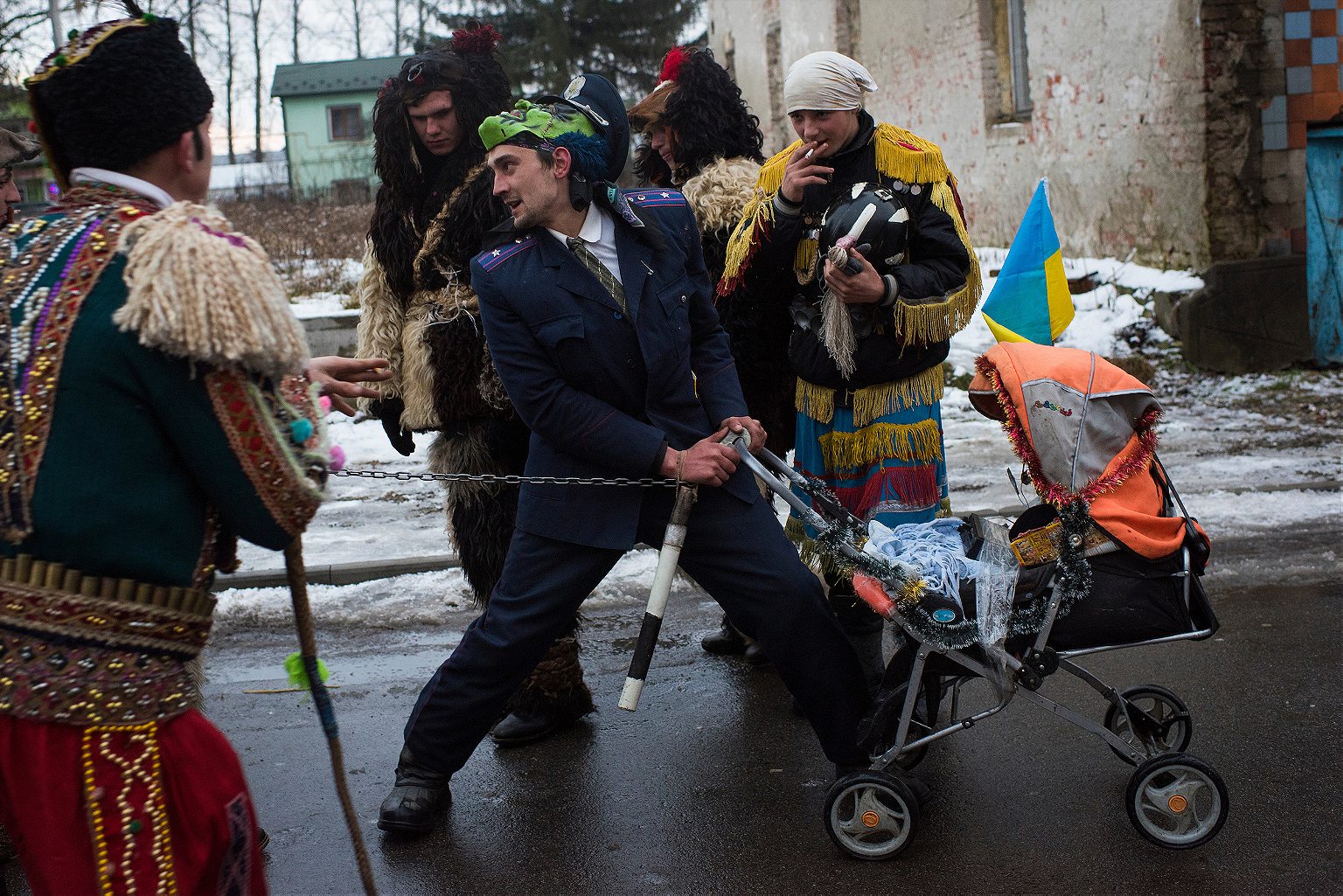
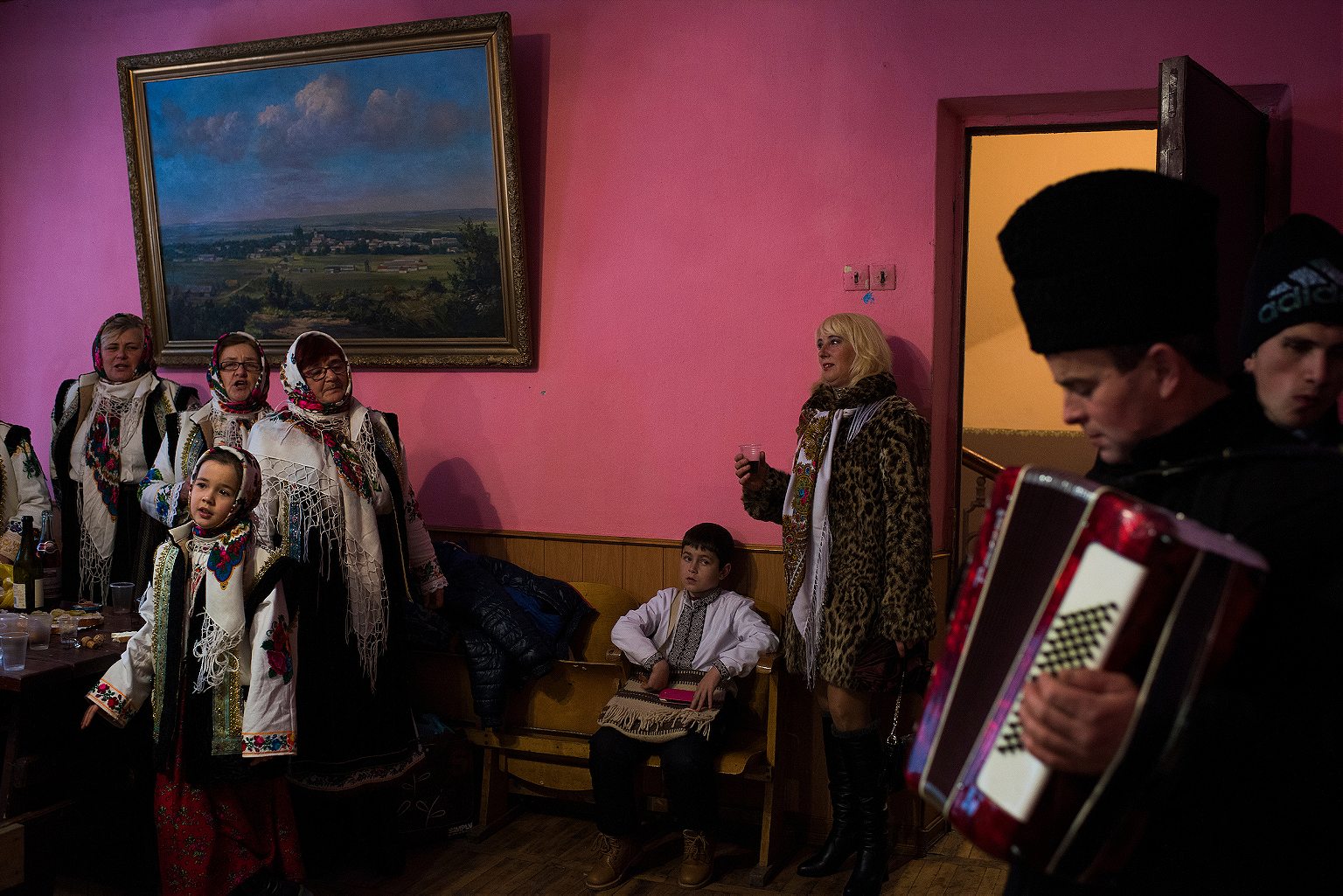
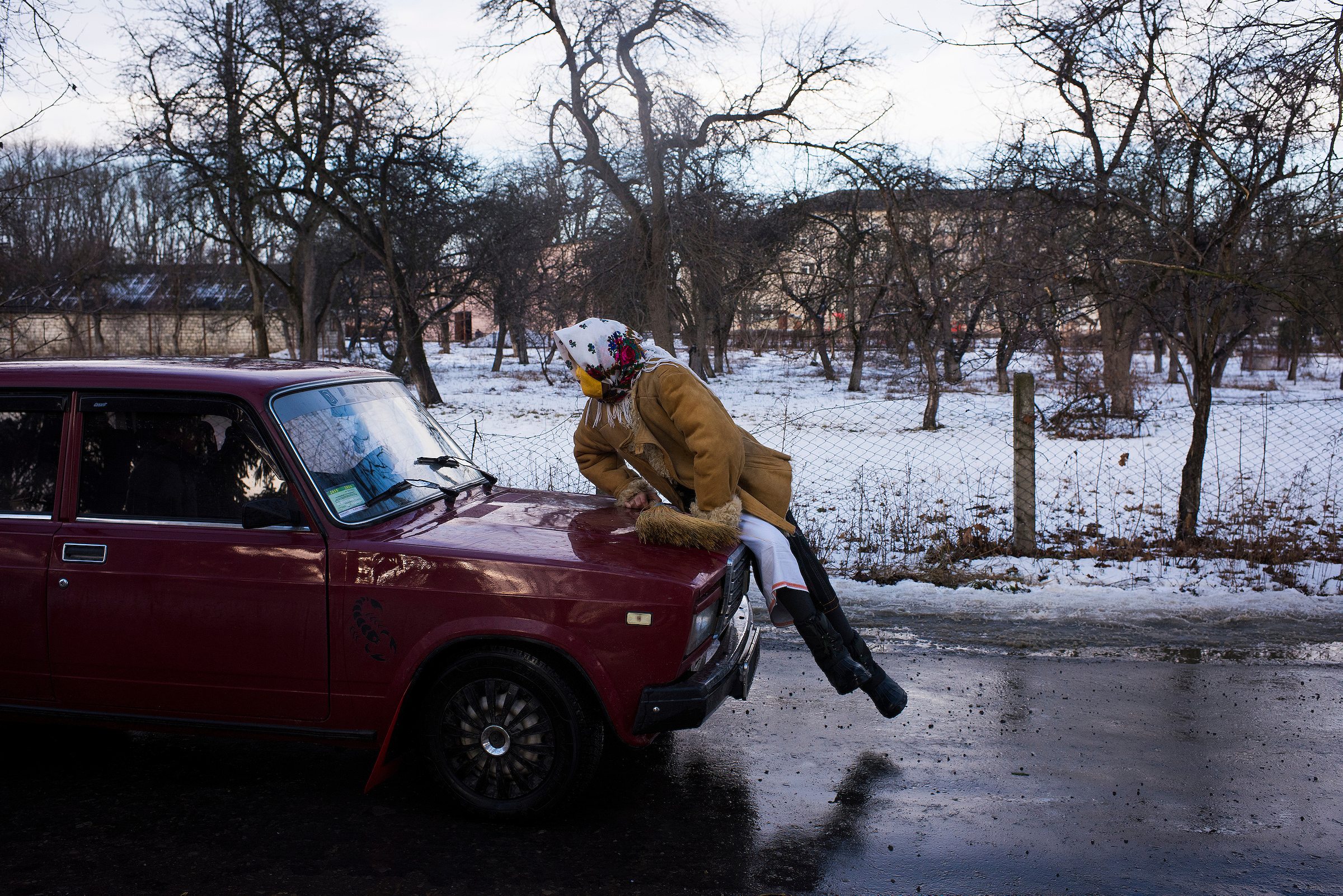
While each village has its own take on the celebration, the basic themes are the same. On New Year’s Eve, revelers begin visiting houses, singing and playing practical jokes on their neighbors, as others prepare a feast for the following day. The night gives way to songs, skits, dancing, parading, and general revelry. In some Malanka celebrations, villagers dressed in handmade costumes take on the role of specific characters that recur each year; in others, as in Vashkivtsi, it is more ad hoc.
As the village exploded into a sort of Eastern-European take on Halloween, I was shown further hospitality by a group of young men dressed as bears who insisted that drinking any less than three shots from their vat of homemade liquor was bad luck. Vehicles converted into floats wove laps around the village, and men dressed in drag aggressively flirted with onlookers to peals of laughter.
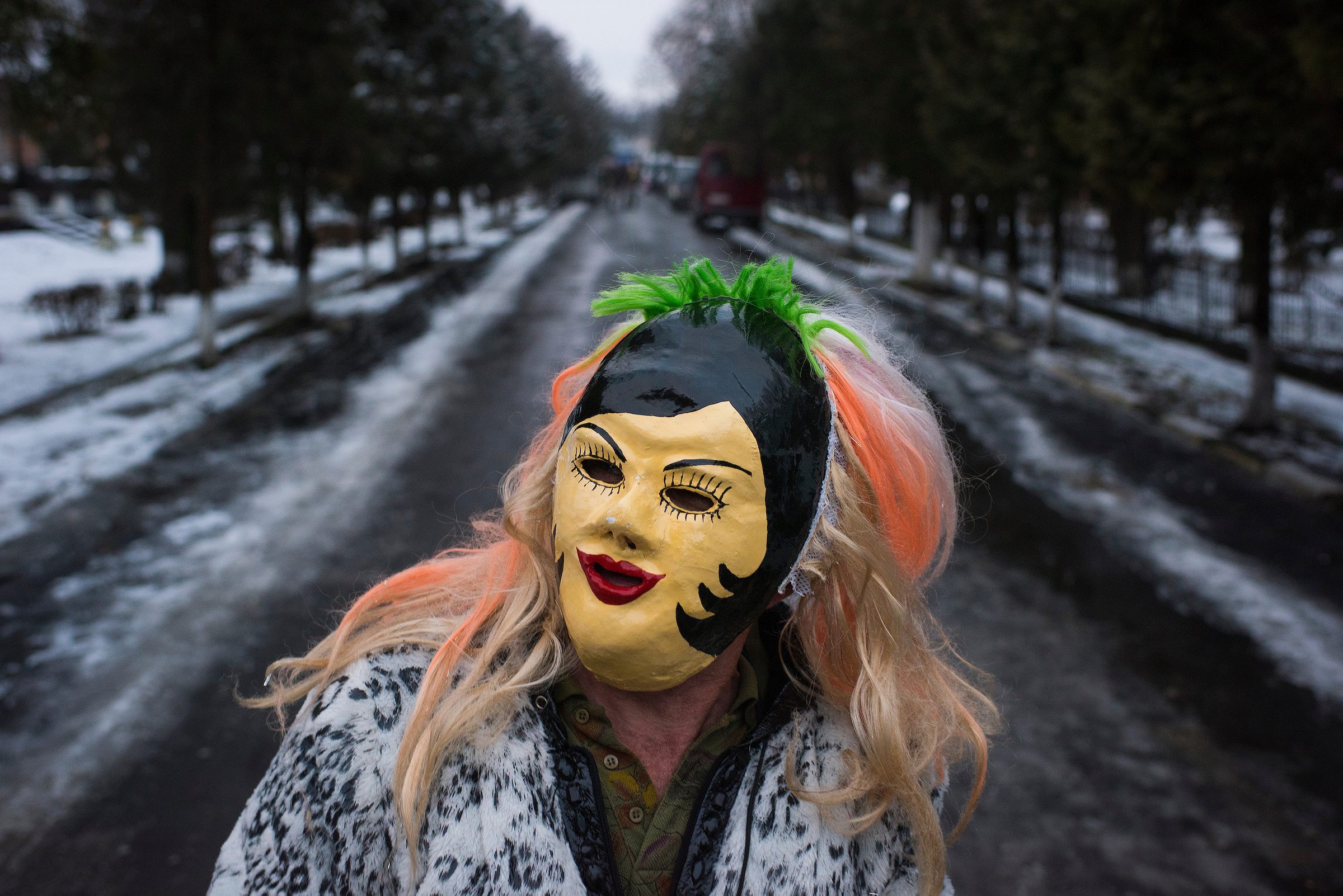

As night fell, the bears invited me back to their home, where someone’s drunken father emotionally insisted that I stay with them (for the night? forever?) as they plied me with plates of food. In the end, only a clandestine SMS from my dying phone with the directive “come save me” ended my detention.
Fifteen minutes later, two of my compatriots came crashing into the apartment, quickly spiriting me to safety via a farewell toast and an eastbound bus out of my Ukrainian dream.